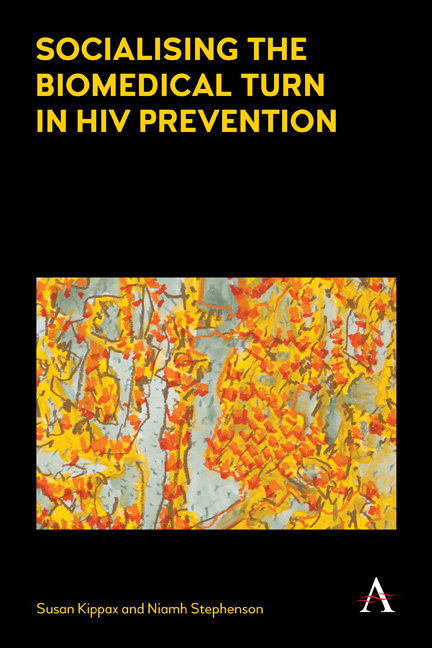Introduction
Published online by Cambridge University Press: 17 June 2017
Summary
This book concerns HIV prevention. In it we argue that until the world focuses its attention on the social issues ‘both carried and revealed by AIDS’ (Fassin, 2007), it is unlikely that HIV transmission will be eradicated or even significantly reduced. The continuing and growing biomedicalisation of HIV prevention, which began in earnest in 1996–1997 after the development of successful HIV treatment and continues with the increasing push to use HIV treatments as prevention, runs the risk of undermining what has been – at least in many countries – a successful prevention response.
Our argument is that at least until such time as biomedicine develops an effective prophylactic vaccine and a cure for the human immunodeficiency virus (HIV), the world must rely on the everyday responses of people and communities to combat HIV. The world must rely on communities and the practices forged by these communities that reduce the risk of HIV transmission (primarily safe sexual and safe drug injection practices); on people's willingness to be identified as infected with HIV (HIV testing practices); and, for people living with HIV, on people's commitment to keep AIDS at bay (HIV treatment practices).
Combating HIV also relies on governments to ensure access to HIVprevention tools, including condoms and sterile needles and syringes, as well as to biomedical prevention technologies, including those derived from successful antiretroviral treatment (ART) – pre-exposure prophylaxis (PrEP), microbicides and post-exposure prophylaxis (PEP) and male circumcision. It relies on governments to develop robust health infrastructures to support and enable regular HIV testing and to provide access to treatments for those living with HIV. It relies on governments to adopt pragmatic policies that are not deflected by moralistic or conservative ideologies. More broadly, combating HIV depends on civil society resisting HIV stigma and discrimination against those infected and affected by HIV, thereby enabling people and communities to discuss sex and sexuality and drug use in ways that promote safe sexual and drug injection practices.
We take issue with a number of widely held biomedical understandings and positions that are affecting, we believe adversely, an effective HIV-prevention response. Although we touch on a number of such issues in the book, the most central are as follows: First, until there is an efficacious prophylactic vaccine, the search for a magic bullet is misplaced.
- Type
- Chapter
- Information
- Publisher: Anthem PressPrint publication year: 2016

